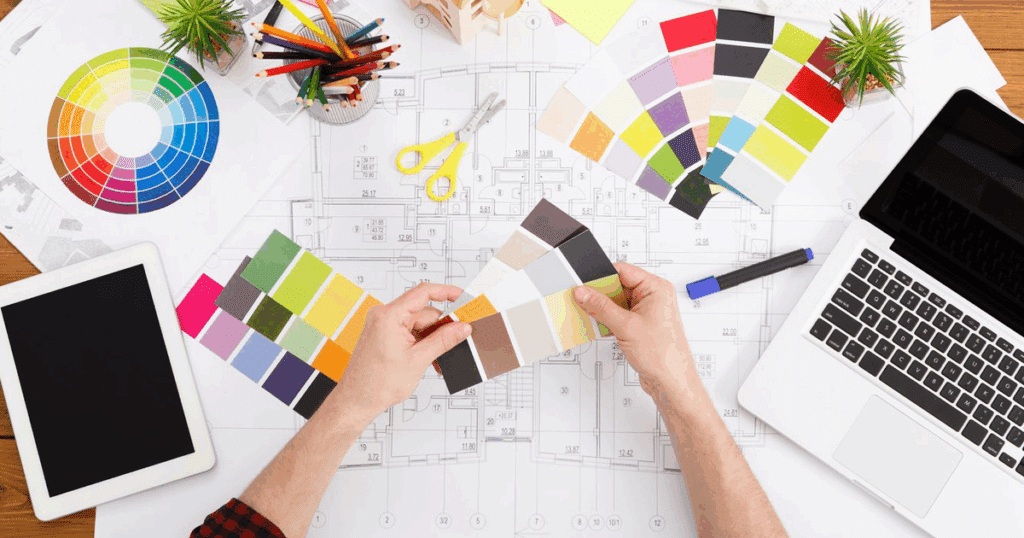There’s a special kind of excitement that comes with planning a renovation. You picture new colors, better lighting, fresh flooring, maybe even a backyard that finally feels like a retreat. But once the dreaming stops and the doing begins, one question quickly takes over: how much is all of this going to cost?
Budgeting isn’t the glamorous side of home improvement, but it’s the part that keeps everything else running smoothly. Small oversights—like misjudging how many tiles you need or forgetting to factor in delivery fees—can quietly chip away at your finances. With a bit of careful measuring, honest estimating, and smart use of free tools, you can keep your project on track from start to finish.
Define What You’re Renovating
The first step to a realistic budget is clarity. Write down exactly what you plan to change and why. Are you replacing outdated flooring, fixing a drainage issue, or just giving a tired space a fresh look? Be specific.
A vague plan like “redo the kitchen” leaves too much room for scope creep. Decide what’s essential and what’s optional. For example, replacing cracked tiles might be non-negotiable, while swapping out perfectly good cabinets might wait for next year. The clearer your priorities, the easier it is to control spending.
Measure Before You Budget
Grab a tape measure and start gathering the facts. Measure the length and width of each room or wall you’ll be working on. Multiply those numbers to get the total area. For curved or irregular spaces, divide them into rectangles and add the measurements together.
If your project involves gravel, soil, or concrete, don’t forget depth. A few inches here or there can make a big difference in how much material you’ll need. It’s worth double-checking every measurement—guesswork is the fastest way to overspend.
Use Simple Tools to Estimate Materials
Once you have the measurements, the next step is to turn those numbers into quantities. Estimating materials by hand can get tedious, so use a few online helpers.
For interior work, a tile calculator can quickly tell you how many tiles your floor or wall will require, factoring in spacing and waste. It will prevent big headaches later when you discover you’re short a few boxes.
If your project extends outdoors, a cubic yard calculator helps you figure out how much gravel, soil, or concrete to order. Enter your dimensions, and you’ll know exactly how many cubic yards or tons to budget for.
These quick checks take only a minute but can save hours of recalculating or multiple store trips down the road.
Understand Where the Money Goes
Once you know what materials you need, start researching prices. Check both local stores and online marketplaces. It’s surprising how much costs can vary depending on brand or region.
List out each material—tiles, adhesive, lumber, gravel, concrete mix, paint, and fixtures—and jot down average prices. When you see everything together, it becomes easier to spot the biggest expenses. Maybe the fancy tiles are eating up more of your budget than expected, or perhaps delivery fees for bulk materials are higher than you thought.
This visibility lets you make trade-offs early instead of when you’re halfway through the job. You can choose a more affordable tile or reuse leftover gravel for another part of the project.
Watch for Hidden Costs
Even the most organized DIYers forget a few small items that add up fast. Think about tool rentals, primer, sealant, underlayment, fasteners, or safety gear. If you’re ordering heavy materials, add transport and delivery fees too.
These aren’t glamorous purchases, but they’re essential. To play it safe, add a 10 to 15 percent cushion on top of your total estimate. That small buffer is your safety net when prices shift or an unexpected issue pops up.
Value Your Time as Much as Your Money
DIY saves on labor, but your time is valuable. Be realistic about how long each stage will take. If you’re learning new skills like grouting or cutting tile, give yourself extra days for trial and error.
Projects often take longer than planned because of setup, drying times, and clean-up. Work in smaller, manageable chunks instead of trying to finish everything in one go. A relaxed pace leads to cleaner results and fewer mistakes.
Buy What You Need, When You Need It
You don’t have to buy every single item before you start. Stagger your purchases based on project stages. Begin with base materials such as concrete, gravel, or framing wood. Then move to tiles, paint, and fixtures once the base work is complete. Decorative pieces and lighting can wait until the final stage.
This approach spreads out costs and gives you flexibility to make small design changes later. Keep receipts neatly organized in case you need to return unopened items.
Keep Track of Spending
Budgeting isn’t just about planning—it’s about staying alert once the work begins. Track every purchase as you go, even small ones. A simple spreadsheet or a notes app on your phone is enough.
Checking your totals weekly helps you spot problem areas before they snowball. If you’re overspending on materials, you can adjust by finding savings elsewhere, like choosing a simpler finish or delaying a non-essential upgrade.
Reduce Waste and Reuse Materials
Efficiency isn’t only good for your wallet; it’s good for the environment too. Use standard material sizes where possible so you waste less on cuts and trims. Plan layouts carefully to minimize offcuts.
Be creative with leftovers. Extra tiles can form a backsplash border or tabletop pattern. Spare gravel can fill garden paths. Even small wood pieces can become shelves or wall accents. Reusing materials adds personal character and keeps usable items out of landfills.
Double-Check Before You Start
Before you open the paint or mix cement, pause for a final review. Make sure your measurements make sense, materials are sufficient, and all the necessary tools are on hand. Confirm delivery dates and check that you’ve accounted for cleanup and disposal.
Catching small mistakes at this stage saves you the frustration of stopping midway through your project because you ran out of something crucial.
Why Careful Estimation Matters
It’s easy to think of budgeting as tedious, but it’s actually empowering. Knowing how much you need—and why—gives you control over the project. When you estimate accurately, you avoid panic buys, delays, and half-finished rooms.
A few simple calculations and reliable tools can turn the unknowns of renovation into clear, predictable steps. You’ll spend your weekends creating, not correcting.
Final Thoughts
A well-planned budget isn’t a limit on your creativity; it’s the foundation that supports it. By taking the time to measure, calculate, and think through each stage, you make space for better design choices and fewer financial surprises.
Every successful DIY project is a mix of inspiration and preparation. The measuring tape and calculator are just as important as the paintbrush and drill. So before you start tearing down walls or laying tile, take a little time to plan every inch. A few careful calculations now can save you money, stress, and a whole lot of guesswork later.

